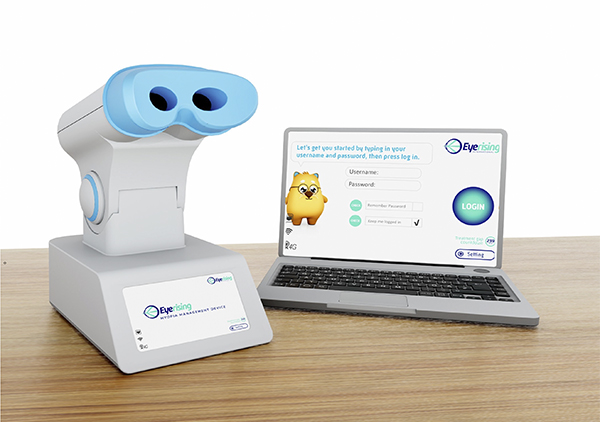 |
|
The maximum reduction of repeated low-level red light therapy was observed at three months, followed by an increasing trend. After one year of therapy, 42% of the children with myopia still experienced axial length regression. Photo: Eyerising International. Click image to enlarge. |
Myopia management can be incorporated smoothly in practice, but parents often prioritize the myopia control options’ effectiveness and safety. Repeated low-level red light therapy can offer a new method; however, the comparative long-term efficacy of the repeated low-level red light therapy based on photobiomodulation vs. orthokeratology (ortho-K) lenses based on peripheral myopic defocus principles remains uncertain. A recent retrospective study published in Optometry and Vision Science compared the effects of using these two options for two years on myopia control. Its findings suggested that repeated low-level red light therapy may be superior to ortho-K lenses.
The repeated low-level red-light therapy and orthokeratology lenses groups comprised 67 and 71 patients, respectively. The age range was between six and 14 years, with myopia of ≤−0.50D and astigmatism of ≤2.50D after cycloplegia. Follow-up data were collected during the initial visit and the treatment period. Changes in axial length over a two-year period and associated factors were analyzed.
Over the two-year period, the repeated low-level red light therapy group exhibited significantly less axial length growth compared with the ortho-K lenses group (0.17mm vs. 0.50mm). In the first year, the axial length growth in the repeated low-level red light therapy group was significantly less than that in the ortho-K lenses group (0.03mm vs. 0.28 mm), with no significant difference observed in the second year (0.14mm vs. 0.21mm). The repeated low-level red light therapy group showed a 55% reduction in axial length after one month and a 42% reduction after one year, compared with 4% and 3% reductions in the ortho-K lenses group, respectively. Linear mixed-effects model analysis indicated that the annual axial length change rate in the repeated low-level red-light therapy group was 0.10mm, compared with 0.25mm in the ortho-K lenses group, with an average difference of 0.15mm. The maximum reduction of the low-light red light therapy was observed at three months, followed by an increasing trend.
The researchers did note that the follow-up period was only 24 months, and a longer follow-up period is needed to confirm the long-term efficacy of repeated low-level red light therapy, optimal timing of discontinuation and rebound effect after discontinuation.
“Our study indicates that repeated low-level red light therapy exhibits control effects comparable to those of orthokeratology lenses, yet it may be more cost-effective and convenient,” they wrote in their paper.
| Click here for journal source. |
Sun JR, Du ZQ, Wu GY. Efficacy comparison of repeated low-level red-light therapy and orthokeratology lenses for myopia control. Optom Vis Sci. November 1, 2024. [Epub ahead of print]. |


